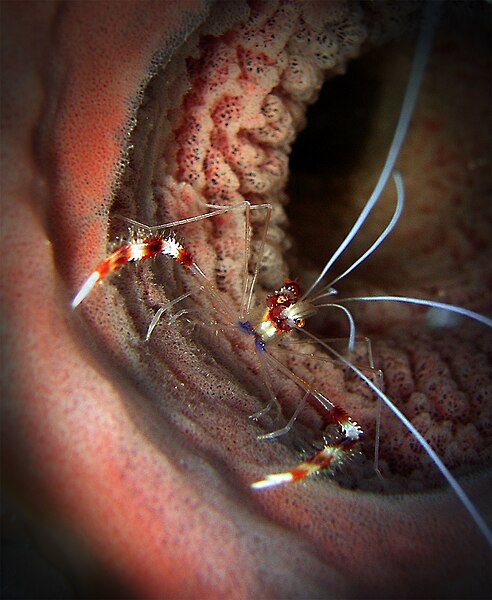 Ever play the board game “Guess Who?”? Its the one where you have to guess which character the other person is by asking questions like “Do you have a mustache?” or “Are your eyes blue?”. Sometimes identifying aquarium animals works the same way.
Ever play the board game “Guess Who?”? Its the one where you have to guess which character the other person is by asking questions like “Do you have a mustache?” or “Are your eyes blue?”. Sometimes identifying aquarium animals works the same way.
Banded Coral Shrimp, also known as Boxing or Boxer Shrimp, are popular for aquarists of all levels. Within this group, common names overlap, most are some variation of red-and-white-bands, two shrimp can be identical except for their antennae color and other subtle differences. These shrimp will almost always fight with another Stenopus species (and may not even tolerate their own species) so knowing which one you have is important.
These five species are the most commonly seen by aquarists but you can use five appearance factors to tell them apart:
- Common name: This is what we use here and may be different from what another store or region calls them, so this is included just to make things easier but is not always going to tell you which one you have.
- Origin: If you (or your LFS) knows where the shrimp was collected from, this can help narrow down which it is. If you know it was collected in Florida, for example, you know it isn’t one of the Indo-Pacific species.
- Legs: This refers mainly to the four pairs of walking legs and doesn’t include the claws. It does,however, include the part of the front legs leading up to the claw itself.
- Claws: These are the big claws in front, the part that grabs food and pinches you if you get too close.
- Abdomen: This is the rear part of the body where the gills are located and where the females hold the eggs (which are a different color altogether).
- Cephalothorax: For lack of a less scientific term, this is the fused head and “torso” of the shrimp. It is where the legs extend from, where the head and mouth are located, and where the carapace (the hard shell on top) protects the internal organs.
- Antennae: These are those long whiskers sticking out of the shrimp’s head.
| S. tenuirostris | Common Name | Origin | Legs | Claws | Abdomen | Cephalothorax | Antennae |
| S. scutellatus | Blue BCS | Indo-Pacific | Blue | Red & White | Red & White | Blue | Blue |
| S. zanzibaricus | Golden BCS | Western Atlantic | White | Red & White | Yellow, Red & White | Yellow | White |
| S. cyanoscelis | Zansibar BCS | Indo-Pacific | White | White | Red & White | Yellow | Red |
| S. hispidus | Banded Coral Shrimp | Western Atlantic, Eastern Central Pacific | White | Red & White | Red & White | Red & White | White |
 Sizes varies between all of these shrimp. I didn’t include it as an identification key because, well, shrimp are small before they are big. S. hispidus is the largest out of all of these and the other four tend to be pretty small, even at their largest. S. hispidus is also the most common and S. cyanoscelis, a fairly newly identified species, is the least.
Sizes varies between all of these shrimp. I didn’t include it as an identification key because, well, shrimp are small before they are big. S. hispidus is the largest out of all of these and the other four tend to be pretty small, even at their largest. S. hispidus is also the most common and S. cyanoscelis, a fairly newly identified species, is the least.
Now we’re one species group closer to pitching our own aquarium identification-based board game to Milton Bradley….
Thanks,
Eileen
 That Fish Blog – Aquarium Advice and Information
That Fish Blog – Aquarium Advice and Information
